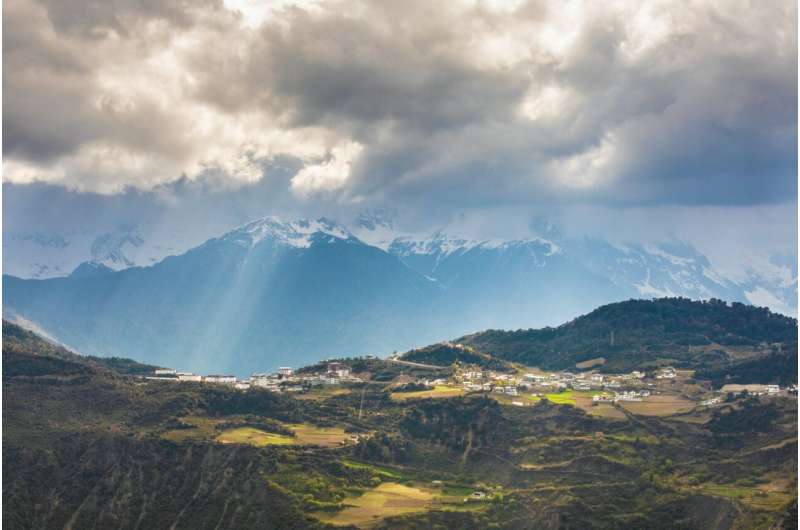This article has been reviewed according to Science X's editorial process and policies. Editors have highlighted the following attributes while ensuring the content's credibility:
fact-checked
peer-reviewed publication
trusted source
proofread
Researchers reveal effects of climate change on above- and belowground biomass distribution on Tibetan plateau

Global warming has significantly altered plant growth patterns on the Tibetan Plateau (TP) over the past three decades. Plants adjust their growth trajectories in response to climate change, prioritizing leaf and stem growth or root extension to better absorb nutrients from the sun, atmosphere, or soil. Therefore, it is important to understand the mechanisms and dynamics of plant growth in permafrost regions of the TP, where significant amounts of carbon dioxide are absorbed, stored, and emitted.
Researchers from the Northwest Institute of Eco-Environment and Resources (NIEER) of the Chinese Academy of Sciences, in cooperation with collaborators, collected the plant samples from the continuous permafrost region of the TP and analyzed the meteorological data between 1995 and 2021.
The study, titled "Changes in above- versus belowground biomass distribution in permafrost regions in response to climate warming," was published in PNAS on June 10.
The results show that plants in the alpine wetlands exhibited a significant increase of 17% in aboveground growth, while plants in the drier alpine meadows and steppes experienced a decrease of 26% and 48%, respectively, in belowground growth.
"In ecosystems with higher moisture levels, climate warming increases aboveground plant growth. However, in drier ecosystems such as alpine meadows and alpine steppes, plants tend to allocate more of their biomass below ground," said Dr. Yun Hanbo of NIEER, first author of the study.
"These trends were primarily driven by changes in soil temperature, which increased three-fold over the study period. In the meadows and steppes, where water is scarcer than in wetlands, the higher moisture content in the soil made the plants more sensitive to temperature changes," said Dr. Yun.
Current ecosystem models have not been able to replicate these specific observations of vegetation types. According to Dr. Yun, these findings could be used to improve projections of carbon cycling in permafrost ecosystems.
More information: Hanbo Yun et al, Changes in above- versus belowground biomass distribution in permafrost regions in response to climate warming, Proceedings of the National Academy of Sciences (2024). DOI: 10.1073/pnas.2314036121
Journal information: Proceedings of the National Academy of Sciences
Provided by Chinese Academy of Sciences





















